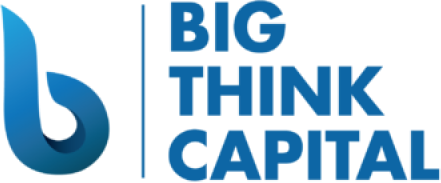Riding the Wave of Change: Navigating Your Small Business Through Shifts in Interest Rate Climate and Optimizing Your Financing Options
Estimated reading time: 5 minutes
- Understanding current interest rate dynamics is essential for securing financing.
- Evaluating various financing options can help mitigate risks associated with rising rates.
- Engaging with financial advisors can lead to better funding strategies.
Table of Contents
- Understanding the Interest Rate Climate in 2025
- Impacts on Small Business Financing Options
- Navigating the Changes: Practical Steps for Business Owners
- Preparing for Future Changes
- Conclusion
- FAQ
Understanding the Interest Rate Climate in 2025
As we transition into 2025, various economic factors shape the interest rate environment. The U.S. Federal Reserve continues to make decisions based on inflation trends, employment rates, and overall economic growth. Key points to consider include:
- Current Federal Reserve Policy: The Federal Reserve (Fed) is responsible for setting the benchmark interest rates that influence overall borrowing costs. For instance, as of early 2025, concerning inflation and labor market dynamics, the Fed has tactically adjusted its rates, leading to variable interest conditions across different lending products (source).
- Historical Trends: Interest rates have gradually climbed from their pandemic-era lows, with projections indicating that they may stabilize or slightly decline. Understanding these historical dynamics enables business owners to anticipate changes and align their strategies accordingly.
- Inflation and Economic Growth: Inflation rates and economic growth trends impact borrowing costs and small business confidence. The Consumer Price Index (CPI) remains a critical measure for gauging inflation trends, influencing the pricing structure of loans (source).
Impacts on Small Business Financing Options
Interest rate fluctuations can significantly alter the financing landscape for small businesses. Here’s how different funding options are affected:
- SBA Loans: Historically favorable due to their low interest rates and terms, SBA loans are directly influenced by the current interest rate environment. In a high-rate scenario, while financing costs increase, businesses leveraging SBA loans might find the long-term stability attractive—particularly beneficial for financing large projects.
- Working Capital Advances: These financing options typically have higher interest rates compared to traditional loans. Understanding cash flow dynamics is crucial, as rapid changes in interest rates can affect repayment strategies. For instance, in a high-rate environment, business owners should consider the repayment timeline to avoid pitfalls.
- Equipment Financing: As interest rates rise, the total costs associated with financing machinery or equipment will increase as well. Businesses should analyze their need for equipment financing against future projections of cash flow and interest rate stability to ensure that the cost remains justifiable.
- Merchant Cash Advances (MCA): With MCAs, businesses receive a lump sum upfront in return for a percentage of their future sales. While subject to high costs, they provide flexibility. Given their cost structures often correlate with sales performance, business owners should be diligent about potential repayment timelines during fluctuations in revenue driven by changing economic conditions.
- Lines of Credit: A line of credit is a tool that offers flexibility in managing cash flow but can be much more costly in a rising interest rate environment. Business owners should regularly evaluate their interest costs and their need for immediate liquidity while considering fixed versus variable rate options.
Navigating the Changes: Practical Steps for Business Owners
To effectively respond to the shifts in interest rate climate, small business owners should adopt a strategic approach to financing. Here are three key takeaways:
- Stay Informed About Market Trends: Regularly monitor changes in interest rates and understand how they impact your specific financing options. Subscribing to financial news sources, attending industry webinars, or consulting with a funding expert can provide necessary insights to adapt your strategy.
- Evaluate Your Financing Needs: Assess your current and future funding requirements. Whether you are looking for immediate capital for operational needs or long-term financing for expansion, identify the most suitable products. Compare interest rates, repayment terms, and fees associated with each option.
- Engage with a Financial Advisor or Lender: Consulting with experts in the funding landscape can provide clarity. At Big Think Capital, our team of funding specialists can help you navigate complex funding environments, analyze the implications of interest rate fluctuations, and tailor financing solutions that align with your business objectives.
Preparing for Future Changes
In addition to the points highlighted, small business owners must prepare for future shifts in the interest rate landscape. Consider implementing the following strategies:
- Refinance Existing Debt: If you currently have higher-rate debt, refinancing to a lower fixed-rate product can safeguard against future rate increases. This might involve consolidation strategies that streamline your repayment process as well.
- Build a Cash Reserve: Developing a financial cushion can make a significant difference. Set aside funds to ensure liquidity in scenarios where accessing capital becomes more expensive due to rising interest rates.
- Explore Alternative Financing Options: Not all financing solutions tie directly to traditional interest rate models. Look into crowdfunding, peer-to-peer lending, or traditional investors, which may provide less volatility in costs.
Conclusion
Navigating the complexities of an evolving interest rate climate requires awareness and proactive decision-making. By understanding the implications of current economic shifts on small business financing options, business owners can optimize their funding strategies to suit their unique needs.
At Big Think Capital, we are dedicated to supporting small businesses throughout this journey. Whether you want to discuss the nuances of SBA loans, equipment financing, or other alternative lending options, our experts are available to help you find the best financing solutions tailored to your business.
To learn more about our services and how we can assist you in securing the funding you need, visit bigthinkcapital.com or speak with one of our funding specialists today. Let’s navigate this financial landscape together and position your business for success.
FAQ
- What is the current state of interest rates? The interest rate climate is influenced by Federal Reserve policy, inflation, and employment trends.
- How do interest rates affect small business loans? Changes in interest rates can influence the cost of borrowing and the types of financing options available.
- What strategies can small businesses adopt during high-interest rates? Businesses should consider refinancing existing debts, building cash reserves, and exploring alternative financing options.






